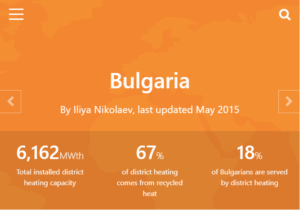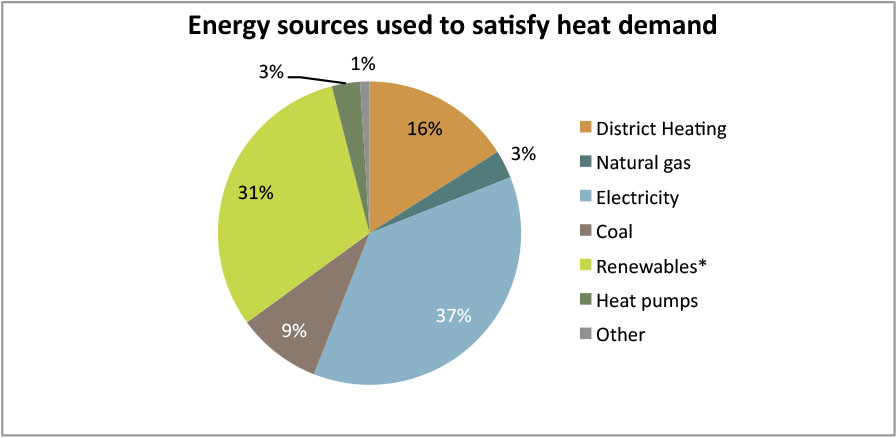
The Bulgarian district heating market has predominantly developed in the capital city of Sofia, with an annual growth rate of 1 to 3% due to new connections to the heat transmission grid, such as new-build residential apartments. The district heating company in Sofia is owned by municipality of Sofia and has no competition. In other large Bulgarian cities, the district heating companies are owned by private entities, which operate in an effective competitive environment with gas supplies.
Overall heat consumption in Bulgaria has been decreasing each year, but the share of thermal energy consumed between residential and non-residential has remained stable. The graph displays the energy sources used to satisfy heat demand in Bulgaria; the largest share is supplied through electric heating, whereas district heating accounts for 12% of heat supply. This supplies 18% of the residential population with district heating and comprises of 67% from recycled heat.
Bulgaria has a National Energy Strategy, where there is a reference to the need for district heating being developed and encouraged as a priority. The strategy contains a plan to stabilise and develop the district heating sector, but this plan is yet to be confirmed by the government and no related measures are in force. Additionally, a European Commission report includes Bulgaria’s progress in implementing measures which encourage the use of high-efficient combined heat and power (CHP) plants to generate electricity and heat. The increase of market share for CHP is highlighted as a key measure for achieving national energy efficiency goals.

If you would like to learn more, you can purchase the latest Country by Country Survey.
Useful links:
Bulgarian District Heating Association (ATDB)